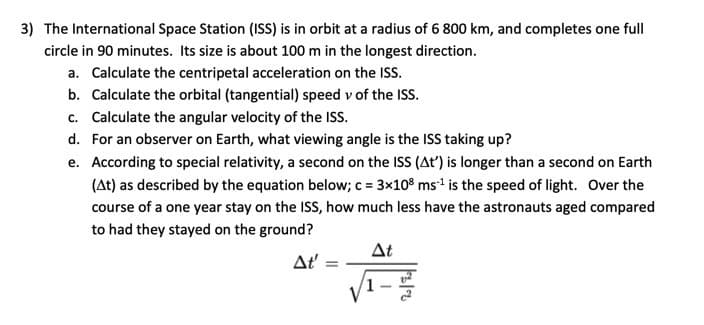3) The International Space Station (ISS) is in orbit at a radius of 6 800 km, and completes one full circle in 90 minutes. Its size is about 100 m in the longest direction. a. Calculate the centripetal acceleration on the ISS. b. Calculate the orbital (tangential) speed v of the ISS. c. Calculate the angular velocity of the ISS.
3) The International Space Station (ISS) is in orbit at a radius of 6 800 km, and completes one full circle in 90 minutes. Its size is about 100 m in the longest direction. a. Calculate the centripetal acceleration on the ISS. b. Calculate the orbital (tangential) speed v of the ISS. c. Calculate the angular velocity of the ISS.
Related questions
Question
Hello,
Can someone please show how to solve this problem?
Thanks

Transcribed Image Text:3) The International Space Station (ISS) is in orbit at a radius of 6 800 km, and completes one full
circle in 90 minutes. Its size is about 100 m in the longest direction.
a. Calculate the centripetal acceleration on the ISS.
b. Calculate the orbital (tangential) speed v of the ISS.
c. Calculate the angular velocity of the ISS.
d. For an observer on Earth, what viewing angle is the ISS taking up?
e. According to special relativity, a second on the ISS (At') is longer than a second on Earth
(At) as described by the equation below; c = 3x108 ms ¹ is the speed of light. Over the
course of a one year stay on the ISS, how much less have the astronauts aged compared
to had they stayed on the ground?
At
At': =
Expert Solution
This question has been solved!
Explore an expertly crafted, step-by-step solution for a thorough understanding of key concepts.
This is a popular solution!
Trending now
This is a popular solution!
Step by step
Solved in 3 steps
